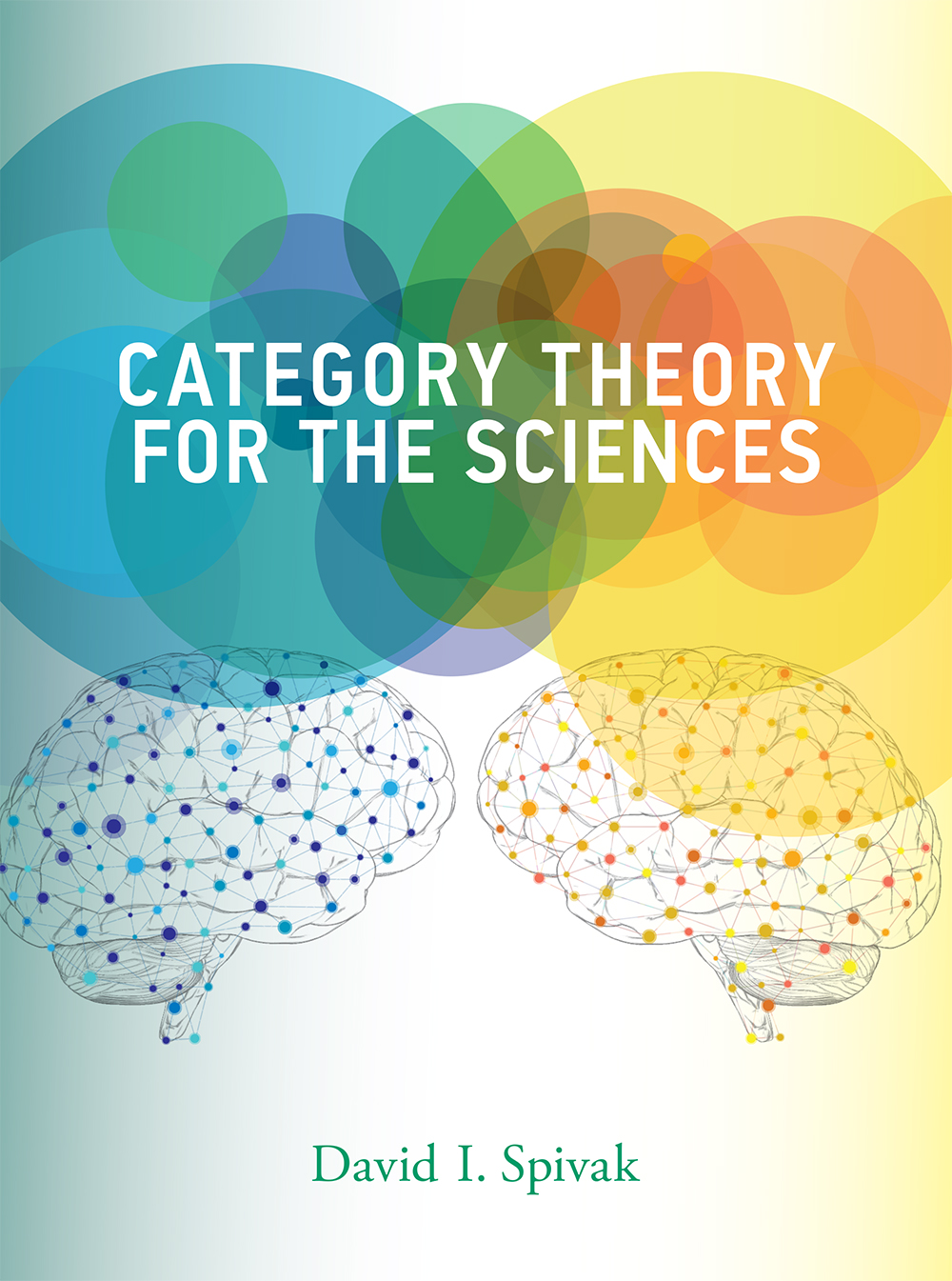David I. Spivak: Category Theory for the Sciences (2013)
Filed under book | Tags: · category theory, data, database, mathematics, methodology, science, set theory

“Category theory was invented in the 1940s to unify and synthesize different areas in mathematics, and it has proven remarkably successful in enabling powerful communication between disparate fields and subfields within mathematics. This book shows that category theory can be useful outside of mathematics as a rigorous, flexible, and coherent modeling language throughout the sciences. Information is inherently dynamic; the same ideas can be organized and reorganized in countless ways, and the ability to translate between such organizational structures is becoming increasingly important in the sciences. Category theory offers a unifying framework for information modeling that can facilitate the translation of knowledge between disciplines.
Written in an engaging and straightforward style, and assuming little background in mathematics, the book is rigorous but accessible to non-mathematicians. Using databases as an entry to category theory, it begins with sets and functions, then introduces the reader to notions that are fundamental in mathematics: monoids, groups, orders, and graphs—categories in disguise. After explaining the “big three” concepts of category theory—categories, functors, and natural transformations—the book covers other topics, including limits, colimits, functor categories, sheaves, monads, and operads. The book explains category theory by examples and exercises rather than focusing on theorems and proofs. It includes more than 300 exercises, with selected solutions.
Category Theory for the Sciences is intended to create a bridge between the vast array of mathematical concepts used by mathematicians and the models and frameworks of such scientific disciplines as computation, neuroscience, and physics.”
Published 2013
267 pages
Spivak’s 2013 course at MITOpenCourseWare
Comment (0)John Mullarkey: Post-Continental Philosophy: An Outline (2006)
Filed under book | Tags: · affect, biology, empiricism, immanence, mathematics, monism, non-philosophy, ontology, phenomenology, philosophy, science, set theory, theory

Post-Continental Philosophy outlines the shift in Continental thought over the last 20 years through the work of four central figures: Gilles Deleuze, Alain Badiou, Michel Henry, and François Laruelle. Though they follow seemingly different methodologies and agendas, each insists on the need for a return to the category of immanence if philosophy is to have any future at all. Rejecting both the German phenomenological tradition of transcendence (of the Ego, Being, Consciousness, Alterity, or Flesh), as well as the French Structuralist valorisation of Language, they instead take the immanent categories of biology (Deleuze), mathematics (Badiou), affectivity (Henry), and axiomatic science (Laruelle) as focal points for a renewal of thought. Consequently, Continental philosophy is taken in a new direction that engages science and nature with a refreshingly critical and non-reductive approach to life, set-theory, embodiment, and knowledge. However, each of these new philosophies of immanence still regards what the other is doing as transcendent representation, raising the question of what this return to immanence really means. John Mullarkey’s analysis provides a startling answer. By teasing out their internal differences, he discovers that the only thing that can be said of immanence without falling back into transcendent representation seems not to be a saying at all but a ‘showing’, a depiction through lines. Because each of these philosophies also places a special value on the diagram, the common ground of immanence is that occupied by the philosophical diagram rather than the word. The heavily illustrated final chapter of the book literally outlines how a mode of philosophical discourse might proceed when using diagrams to think immanence.
Publisher Continuum International Publishing Group, 2006
Transversals: New Directions in Philosophy series
ISBN 0826464610, 9780826464613
260 pages
PDF (updated on 2012-9-6)
Comments (2)
